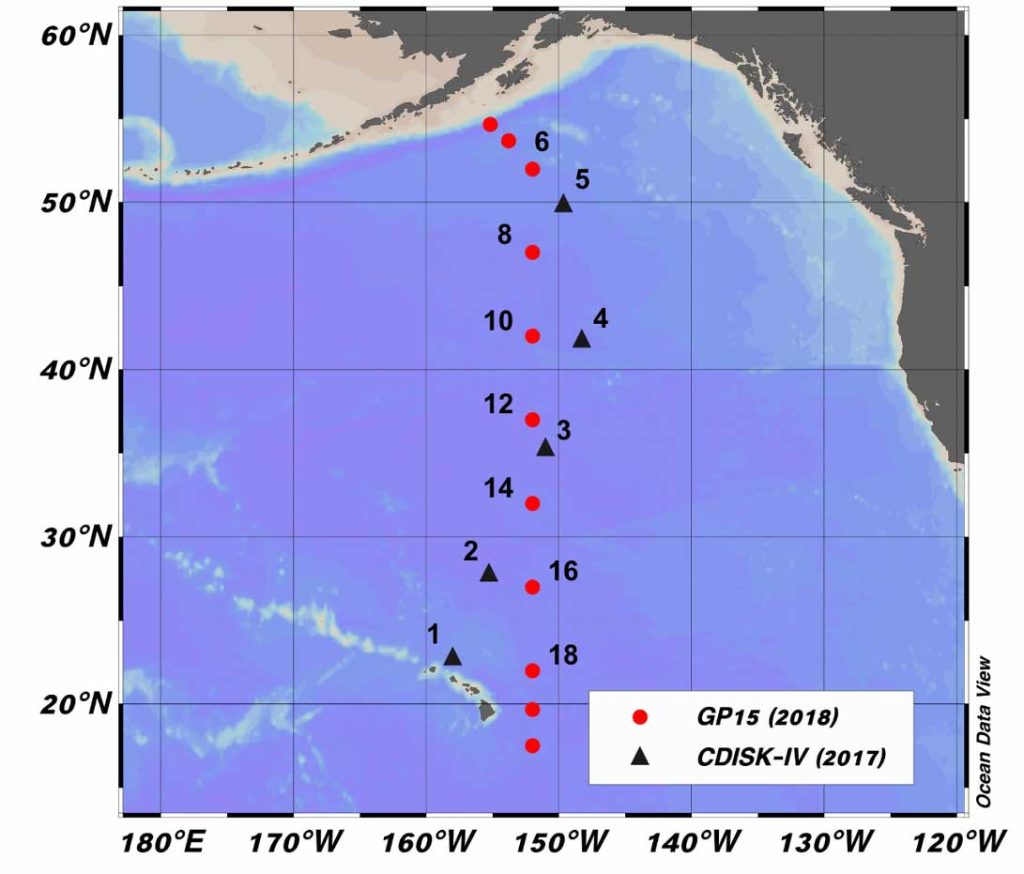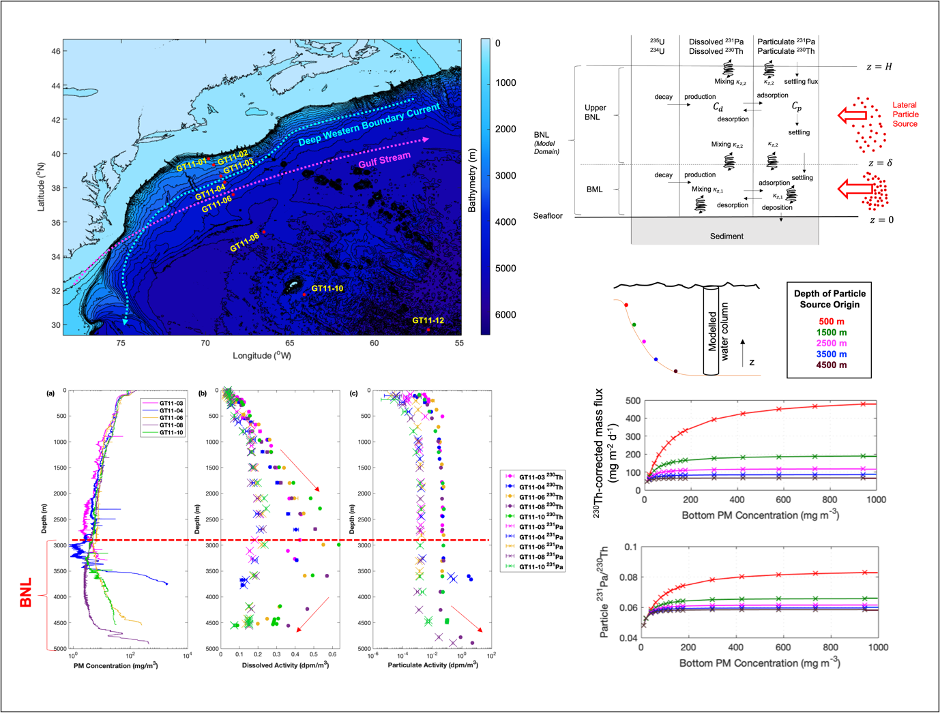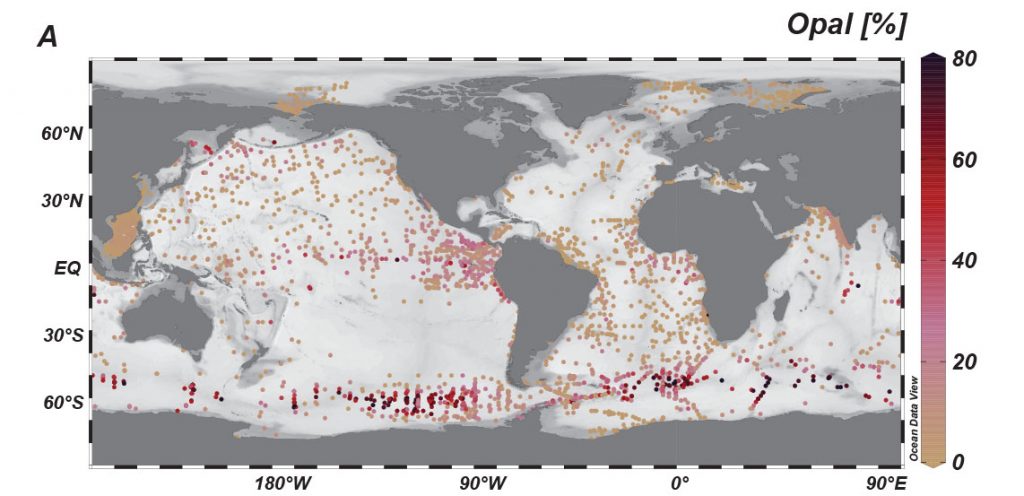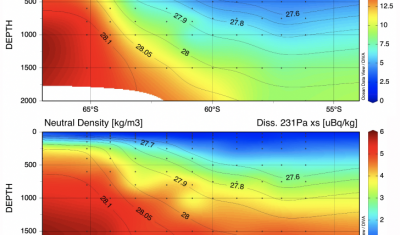In the marine environment, the different elements of the natural radioactive families of uranium (U)and thorium (Th) can be classified into two groups: those that are soluble in seawater and those that are particle-reactive, extracted from the water column by chemical and biological processes (adsorption, aggregation, precipitation).
Thorium isotopes are very reactive toward particles in the marine environment. In seawater, thorium is present as Th(OH)4 oxide and adsorbs on all solid surfaces.
Thorium isotopes have different half-lives:
234Th: T1/2 = 24.1 days
232Th: T1/2 = 1.4 1010 years
230Th: T1/2 = 7.5 104 years
Thorium-232 (232Th) is the most abundant and is brought to the ocean in detrital form by rivers and the atmosphere. 232Th, coming from terrigenous dust, is directly associated with particles in the ocean. It is mostly transported by detrital matter. In the earth’s crust its concentration is of the order of 10.7 ppm but in sea water it is less than 0.7 ppt Thus, this isotope is used in marine geochemistry to quantify the so-called lithogenic contributions (from the erosion of rocks).
Thorium-234 (234Th) and Thorium-230 (230Th) are produced in situ (in dissolved form) by radioactive decay of Uranium-238 (238U) and Uranium-234(234U) by alpha emission. The concentrations of 238U and 234U are constant in the ocean, these nuclides represent homogeneous sources of 234Th and 230Th in the water column. These thorium isotopes, produced in situ, rapidly leave the seawater by attaching to marine particles. In this form, they become tracers of particulate matter. Therefore, the use of U/Th imbalances allows the study of:
- Particle fall rate and calibration of particle traps
- Estimation of exported production
- Interaction processes between solution and marine particles
- Ventilation of intermediate and deep waters
Find below a summary of main GEOTRACES findings and products on thorium research:
Atlas
(The images below may not show if you are using Safari. Please change your browser if necessary).
Thorium-230
Atlantic Ocean:
Pacific Ocean:
Arctic Ocean:
Thorium-232
Atlantic Ocean:
Arctic Ocean:
Thorium-234
Atlantic Ocean:
Arctic Ocean:
3D scenes showing the distribution of 230Th, 232Th and 234th in the Atlantic, the Pacific and the Arctic Oceans. In warm colours (red, orange, etc.) you can view high concentrations of dissolved thorium.
Data
Data is available to download after registration here: https://geotraces.webodv.awi.de/login
Discoveries include:
Below you can find a list of science highlights of main GEOTRACES discoveries on thorium research:

Science Highlights
First direct measurement of actinium (but also radium and thorium) distribution coefficient values in marine sediments
Actinium-227, radium-226 and radium-228 profiles in sediments were measured and modeled at 5 stations in the Northeast Pacific…

Science Highlights
Intense benthic nepheloid layers in the Northwest Atlantic Ocean lead to unexpected distributions of dissolved and particulate thorium-230 and protactinium-231
Chen and colleagues explore the behaviour of thorium-230 and protactinium-231 in the benthic nepheloid layers…

Science Highlights
A new and more quantitative atlas of the deep-sea burial fluxes of major and trace elements
Among other findings, authors find that the new opal flux is roughly a factor of two increase over previous estimates having important implications for the global silicon cycle.

Science Highlights
Variable dissolution rates and fates of lithogenic tracers at the air-sea interface
Roy-Barman and co-authors established the dissolution rates from Saharan dust reaching Mediterranean seawater.

Science Highlights
Thorium-Protactinium fate across the tropical Atlantic Ocean: what reveals the water column-sediment coupling
Twenty seawater profiles and twenty core-top 231-protactinium and 230-thorium analyses were realised by Ng and colleagues along five depth transects across the northern tropical Atlantic open ocean.

Science Highlights
Isopycnal mixing controls protactinium and thorium distributions in the Pacific Southern Ocean
Pavia and co-workers determined the physical and chemical speciation as well as the vertical distribution of Protactinium-231 and Thorium-230 at 12 stations across the Southern Pacific Antarctic Circumpolar Current…
List of publications
Scroll down to view the list of GEOTRACES publications on dissolved thorium:
